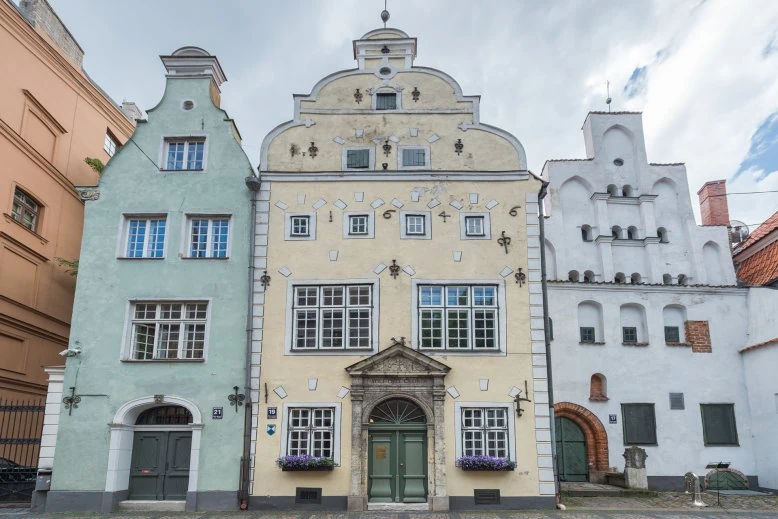Top tourist attractions in Riga
Looking for must-visit tourist attractions in Riga? Everyone visiting Riga for the first time should start by visiting the city’s main landmarks. It is best to start getting to know the city's more than 800-year history with a walk through the Old Town and continue in the so-called quiet center district of Riga, enjoying the magnificent Art Nouveau architecture.

The Old Town
The Old Town Riga is the oldest part of our capital city, it is a city center, as well as a favorite place for recreation and entertainment for tourists. In 1997, the historical center of Riga was included in the UNESCO World Heritage List.

Latvian National Museum of Art
The Latvian National Museum of Art is one of the most frequently visited sights in Riga. It is the most significant depository in the nation for works of art. Reopened in May 2016, the building itself has been upgraded, modernized but its majestic beauty from a long-gone era - preserved.

Riga Dome Cathedral
The Cathedral is the largest and one of the oldest sacred buildings of the medieval period in the Baltic region, combining Romanesque, early Gothic, Baroque and Art Nouveau features. Today, alongside church services the cathedral hosts concerts by local and internationally renowned musicians.

St. Peter's Church
St. Peter's Church is the highest church in Riga and one of the oldest and most notable sacred buildings of medieval monumental architecture in the Baltic States.

Riga Zoo
Riga National Zoological Garden (Riga ZOO) is the oldest zoo in the Baltic States, which boasts about 400 species of animals and about 3,000 animals.

Freedom Monument
The Freedom Monument has been Riga's central landmark for almost a century. This 42.7 m tall granite and copper work of art is a symbol of the Latvian nation's striving for freedom and independence.

House of the Blackheads
The House of the Blackheads is among Riga's top sights, located in the heart of Old Riga, near the Town Hall Square, facing the Riga City Council. The house is very deservedly called grand and royal, and it is a must-see for every city guest.

Art Nouveau
Art Nouveau is an art style of the late 19th and early 20th centuries. The development of Art Nouveau in Riga coincided with a time of unprecedented prosperity in the city's history, and today the capital of Latvia is deservedly considered an Art Nouveau mecca.

Latvian National Opera and Ballet
Riga White House - Latvian National Opera and Ballet has been operating on Aspazijas Boulevard since 1923. During the season, which runs from September to the end of May, an average of six new performances are staged, maintaining a balance between the opera and ballet genres. In addition, more than 200 performances and several symphonic and chamber music concerts are shown in one season.

National Library of Latvia
Opposite the Old Town, on the left bank of the Daugava, rises the building of the National Library of Latvia or the Castle of Light. This is one of the most significant cultural buildings in the history of restored Latvia. The library's new building was opened in August 2014, designed by the world-renowned Latvian architect Gunārs Birkerts.

Āgenskalns Market
Open since 1898, Āgenskalns Market is the largest and oldest market in the neighborhood and has the status of a national cultural monument. From 2018 to 2022 the historical pavilion of the market had a renovation and it reopened in May 2022. Now everyone is invited to view the impressive changes after the renovation.

Riga Central Market
The leading market squares were once demolished or rebuilt in many cities worldwide. Guides showing different European metropolises say: "There used to be a market here!", but it is not a story about Riga, because right here, in the middle of the city, next to the Daugava, lays the impressive Riga Central Market, one of Riga's most interesting sights.

Kalnciema Quarter
A unique 19th century's complex of wooden buildings is now renovated in Pārdaugava. A group of friends and associates are actively involved in a project of preserving the historic atmosphere of the quarter and adapting it to the dynamics of the 21st century. Buildings invite you to enjoy Latvian and European design, fairs, art exhibitions and workshops at court-yards. The quarter's special feature is old LADA cars to take you into the past.

Three Brothers
The oldest residential complex in Riga has survived from the 15th century. The three houses, which had been cramped together, had long been called the Three Brothers - legend has it that men of the same family built them. The buildings, which are several centuries old, now house the Museum of Architecture and the National Center for the Protection of Cultural Monuments.
